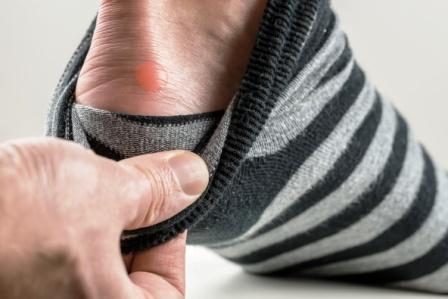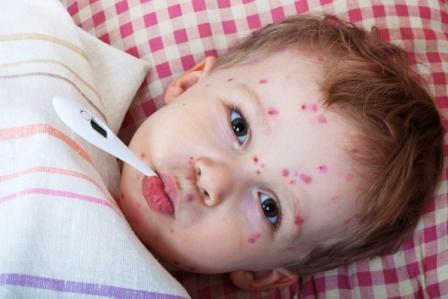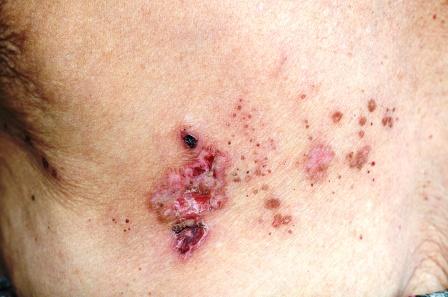Blisters: Causes, Differential Diagnosis, How They Manifest?
Article by Dr Raghuram Y.S. MD (Ay)
Blisters occur within the upper layers of the skin.
The blister pockets are usually filled with one or the other of:
Clear fluid (serum or plasma)
Blood (blood blisters)
Pus (if the blisters are infected)
They may be caused due to one or the other of the below said factors:
Friction (forcible rubbing)
Burning
Freezing
Chemical exposure
Infection

Table of Contents
Word derivation
The word Blister came from the Middle Dutch term ‘bluyster’ which was again a modification of the old French word ‘blostre’ which meant leprous nodule. Leprous nodule is a raised part of the skin occurring due to leprosy. The word ‘blister’ entered English term in the 14th century.
Vesicles – The small sized blisters are called ‘vesicles’
Bulla – Blisters of greater size are called ‘bulla’.
Causes for blisters
As already briefed blister can occur when the skin has been damaged by friction or rubbing, heat, cold or chemical exposure. Fluid collects between the upper layer of the skin (epidermis) and the lower layers. This fluid cushions the tissue underneath, protecting it from further damage and allowing it to heal.
Friction or rubbing –
- Intense rubbing or friction caused on the skin for long duration can cause blisters.
- They occur due to long distance walking, running or after wearing old or poorly fitting shoes for long duration. In these cases blisters usually occur on feet.
- Blisters can also occur on hands also and is caused due to repetitive motions like playing video games, digging with a shovel, playing guitar etc.
- Blisters form more easily on moist skin in comparison to dry or soaked skin.
- Blisters also occur in warm conditions.
- If the rubbing is less aggressive and over long periods of time, it might not cause blister. In fact they can cause calluses.
- Both blisters and calluses lead to more serious complications such as foot ulceration and infection mainly when the sensation or circulation is impaired. This generally happens in case of diabetes, neuropathy, and peripheral arterial disease (PAD) etc conditions.
Extreme temperature –
Burning causes blister formation. First and second degree burns may result in blistered skin. First degree burns cause blisters after couple of days. Second degree burns cause immediate blisters.
Frostbite – occurs when skin is exposed to extreme or prolonged cold. The skin and the tissues beneath it freeze. Nerves and blood vessels also may freeze in extreme conditions. It also occurs when your skin directly contacts very cold surfaces. Blisters can also occur on hands and feet due to frostbite. Frostbite causes tissue damage leading to formation of blisters.
Chemical exposure –
Various types of chemicals when come into contact with our skin can cause blisters. They include
Cosmetics
Detergents
Solvent
Contact dermatitis –
Contact dermatitis can also cause blisters. This is a skin reaction to allergens like:
Poison ivy,
Latex,
Adhesives, and
Irritants like chemicals like nickel sulphate, balsam of Peru or urushiol (poison ivy, poison oak, poison sumac) or
Contact with pesticides.
Other contacts –
Allergic reaction to an insect bite or sting
Chemical warfare agents (blister agents or vesicants), example mustard gas
Crushing or pinching –
Blood blisters usually happen if the skin is crushed, pinched or aggressively squeezed. A blood blister usually forms when a minute blood vessel close to the surface of the skin ruptures (breaks) and blood leaks into a tear between the layers of the skin.

Differential diagnosis
Medical conditions (Differential diagnosis of Blisters) –
Chickenpox – an infection caused by a virus (varicella zoster), produces itchy spots and often causes blisters. The same virus that causes chickenpox also causes shingles or herpes zoster. The virus reappears in some people later in life and produces a skin rash with fluid vesicles that can rupture.
Shingles or herpes zoster – It is an infection caused by varicella zoster virus. It may be a consequence of chicken pox. Even after chickenpox is treated, the virus may live on in your nervous tissues for many years before reactivating as shingles. It is characterized by a red skin rash that usually causes pain and burning. It usually appears as a stripe of blisters on one side of the body, typically on torso, neck or face. They usually clear up in 2-3 weeks and rarely recurs.

Herpes – Herpes simplex virus (HSV) is an infection which is responsible for causing herpes. It can occur anywhere in the body. It occurs commonly on the genitals and or mouth. HSV-1 type of virus (oral herpes) can cause cold sores and fever blisters around the mouth and on face. HSV-2 type of virus generally causes genital herpes.
Cold sores – They are red, fluid filled blisters. They occur near the mouth or other areas of the face. They may rarely appear on fingers, nose or inside the mouth. Usually they are clumped together in patches. They may persist for two weeks or longer. It is caused by herpes simplex virus. They tend to spread from person to person through close contact such as kissing. The sores are contagious.
Erysipelas (infection caused by Streptococcus group of bacteria) – It is similar to cellulitis (another skin disorder) which occurs in the lower layers of the skin against erysipelas which occurs in upper layers. The infection causes large, raised red patches on the skin. Blisters, fever and chills are hallmark symptoms. It more commonly occurs on face and legs.
Impetigo – is a bacterial infection of the skin can cause blisters. It is caused by streptococcus pyogenes and staphylococcus aureus. It is highly contagious skin condition. It usually occurs on the face, neck and hands of young children and infants. It is common in diaper wearing children and infants. It is rare in adults. It may occur in adults following another skin condition or an infection. Symptoms include red sores that pop easily and leave yellow crust. Prognosis is good and usually goes away within 2-3 weeks.
Allergic eczema – is a skin condition that is caused or worsened by allergens that trigger an immune response in the body and can produce blisters. It is an itchy skin rash that develops when you come into contact with an allergen.
Dyshidrotic eczema – is a type of eczema, also called dyshidrosis also causes blistering. It is a skin condition in which blisters develop on the soles of your feet and or the palms of your hands. The blisters are usually itchy and may be filled with fluid. Blisters usually last for about 2-4 weeks and may be related to seasonal allergies or stress.
Bullous pemphigoid – causes large, tightly filled blisters, affects people over 60 years of age. Pemphigoid is a rare autoimmune disorder that can develop at any age but usually affects elderly people. Phempigoid is caused by a malfunction of immune system and results in skin rashes and blistering on the legs, arms and abdomen. It also causes blistering on mucous membranes in your eyes, nose, mouth and genitals.
Pemphigus vulgaris – serious skin disease in which blisters develop if pressure is applied to the skin, they burst easily, leaving raw areas that can become infected. It is a rare autoimmune disease that causes painful blisters on the skin and mucous membranes. It affects the mucous membranes of mouth, throat, nose, eyes, genitals and lungs.
Dermatitis herpetiformis – blisters with intense itch, occurs usually on elbows, knees, back and buttocks, blisters occur in patches on both sides of the body
Chronic bullous dermatosis – clusters of blisters occur on face, mouth, genitals
Cutaneous radiation syndrome – due to exposure of the skin to radiation, blisters occur as part of other symptom complex
Epidermolysis bullosa – is a group of inherited connective tissue diseases that cause blisters in the skin and mucosal membranes
Porphyrias – they are a group of rare inherited blood disorders. People with these disorders do not make haem, a component of haemoglobin. Haem is made of porphyrin (naturally occurring organic compound in the body) bound to iron. Heme helps RBC’s carry oxygen and also gives RBC’s their colour. It is also found in myoglobin, a protein in the heart and skeletal muscles. Blisters occur as part of symptoms in porphyrias.
Stomatitis – is a sore or inflammation in the mouth. This can occur in cheeks, gums, inside lips or on the tongue. Herpes stomatitis (caused by Herpes Simplex 1 or HSV1) and apthous stomatitis or canker sores (clusters of small pits or ulcers in cheeks, gums, lips or tongue) are common types and more often occur in children and teens.
How blisters occur?
Friction blisters are caused by excess shear stress between the surface of the skin and the body.
The layers of skin around Stratum spinosum of skin are most susceptible to shear.
When the stratum spinosum tears away from the connecting tissues below, the plasma from the cells diffuses out.
This plasma solution that had diffused out helps new cells to divide and grow into new connective tissues and epidermal layers of the skin.
The clear fluid will be reabsorbed as new cells develop and the swollen appearance will subside.
Painful blisters located on hands and feet are due to tissue shearing deeper in the epidermis, near nerve endings. Lower tissues are more susceptible to infection.
Consult Dr Raghuram









